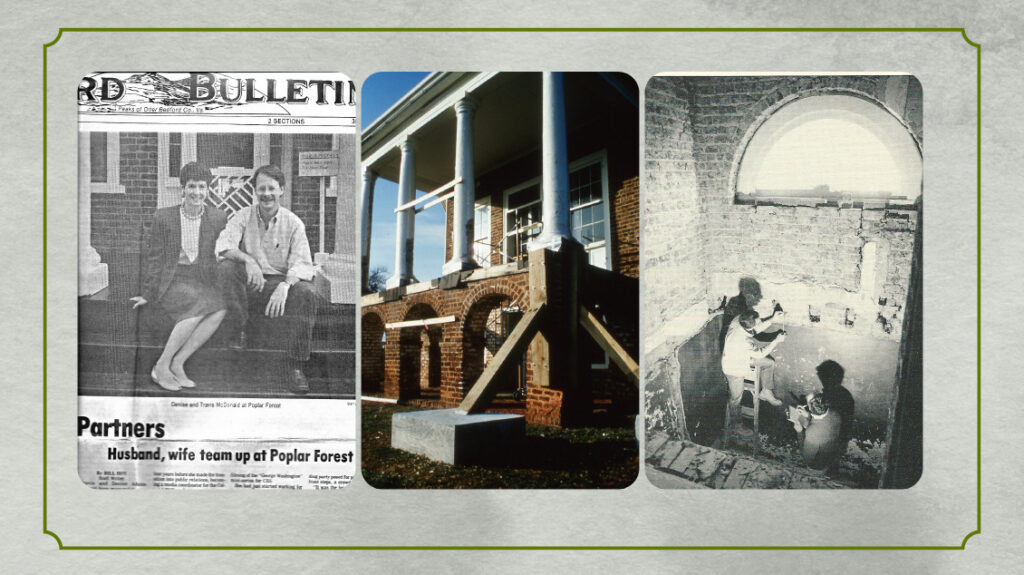Learn
Architectural Restoration
Saved from development in 1984, the Poplar Forest villa has officially been restored back to its Jefferson-era appearance. A stunning environment where architecture and landscape are seamlessly intertwined, the continued study of the Poplar Forest house and surrounding lands are shedding new light on Jefferson, his creativity, his curiosity, and his private world.
Designs for Greatness
One well-known Jeffersonian historian firmly believed Thomas Jefferson’s “greatest intellectual energies and original talents were devoted to architecture.” It is for his architecture that Jefferson’s works are listed on the World Heritage List as masterpieces of human creative genius that have universal value to all mankind.
Why then would his most ideal and personal work of architecture, his most mature domestic work in which he lived for fourteen years, be relatively unknown?
Jefferson owned several plantations, but designed and built elaborate houses for himself only at Monticello and Poplar Forest. In 1806, construction began on perhaps the first brick octagonal house in America—the centerpiece of his intricate villa design.
This is the story of how Thomas Jefferson’s villa retreat at Poplar Forest, came to be rediscovered and appreciated as one of his most important architectural works, a true masterpiece of architectural and landscape elements. The stories here tell the incredible journey of understanding and confirming Jefferson’s brilliant design and putting it back together in a process that mirrors Jefferson’s long, painstaking effort to create this unique and personal work.
It is the mission of the nonprofit Corporation for Jefferson’s Poplar Forest to preserve, inspire, and tell the emerging story of Thomas Jefferson’s Poplar Forest. That encompasses restoring the buildings and landscape of the villa retreat Jefferson created in the midst of his plantation, plus the diverse features at the core of the farm—including its buildings, fences and roads.
The restoration of Jefferson’s villa was being done in phases for two reasons: In-depth research preceded all hands-on work, and funding from mostly private sources was secured before the start of a major project.
The first objective in restoring Poplar Forest was to investigate Thomas Jefferson’s retreat to understand it how it looked and functioned. That has been accomplished through documentary research and detective work both in the soil and the buildings—including excavating in the ground and analyzing the evidence present in the surviving original structures. When sufficient knowledge was found, it was possible to physically restore the features of the retreat so that the public can gain insight from experiencing it the way it was originally constructed and used.
A JOURNEY THAT BROUGHT US TOGETHER
This presentation was featured at the 40th Anniversary Gala in April 2023, chronicling images of the architectural restoration process through the last four decades at Poplar Forest. Click here to view or download!


With your generous support, we can restore more of Poplar Forest, guided by Jefferson’s original vision, to more fully explore his design and intent.
Make Your Gift NowDiscover the internship opportunities available at Poplar Forest.
Learn More